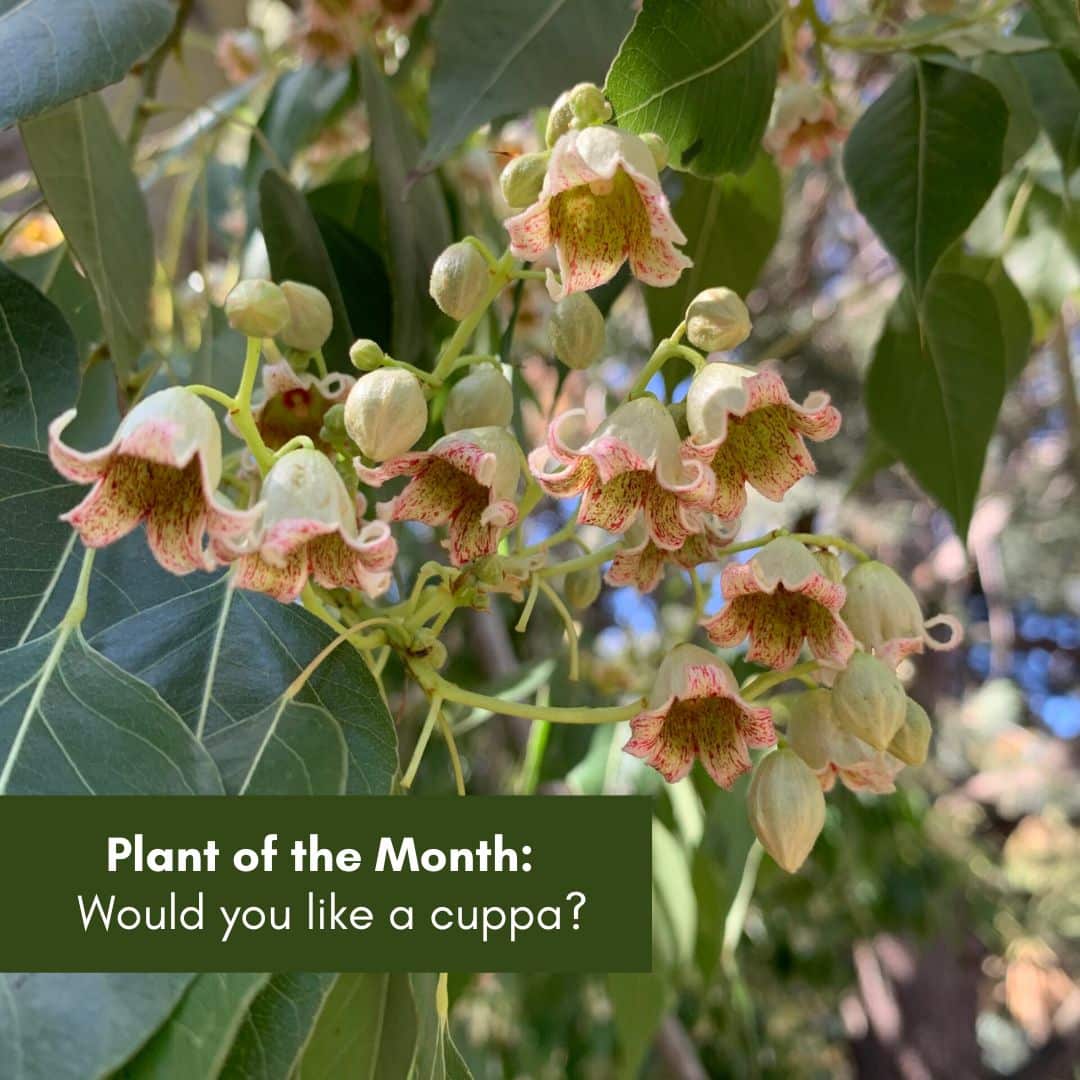When you’re out of tea (or coffee) you’ll pretty much use anything and that must have led to some interesting experimentation by the first colonists, I’m guessing many were tried with some very interesting results before settling on some more or less acceptable “tea” making species.
Tea Trees (and in this I’m including Callistemon, Melaleuca and Leptospermum) get their common names both from the way they stain water with their tannins and also their use in making tea with the Melaleucas and Callistemons having the added benefit of producing lots of nectar for sweetening the tea (though you’ll be wanting to strain out the stamens – don’t ask me how I know).
Crimson Bottlebrush (Callistemon citrinus), one of the more common Callistemons and like most fresh new leaves can be torn up and seeped in hot water for an acceptable drink.
Lemon Scented Tea Tree (Leptospermum liversidgei) , growing in the coastal heathlands of the Lower Hunter this is one of my favourites, a lovely lemony taste up there with the Lemon Myrtle and without the resiny aftertaste of the other Lemon Scented Tea Tree, (Leptospermum petersonii). Apparently also works well as a mosquito repellent
Second image from: https://www.anbg.gov.au/leptospermum/leptospermum-liversidgei.html
Sweet Sarsaparilla (Smilax glyciphylla), a climber found in moist coastal forests with distinctive reddish new growth, it is possibly a little sweet for some people’s taste but it can be used to make a “tea” but only a small amount is required (one fresh leaf should do it)
Seeds of both Kurrajong (Brachychiton populneus) and Illawarra Flame Tree (Brachychiton acerifolius) can be roasted and ground and used as coffee (though taste more chocolatey), it’s not that strong but when you need a cuppa and nothing else is available it’s quite acceptable.
I’ve been unable to find any Australian native plants which have been confirmed to contain caffeine, though it is possible in the Kurrajongs (closely related to Cacao which has caffeine) or Coffea brassii, an Australian coffee species found in Cape York (not all species of Coffea contain caffeine, this one may or may not)
What’s in a Name?
As we’ve seen a lot of plant names are descriptive, many are named after people, many after locations and then there’s the “Huh?” naming (I would use a three letter acronym but this is a family newsletter), this month we’ll look at some of the common people’s names used in naming:
Banksia, Banksii and various derivations were named for Joseph Banks, botanist on the Endeavour and later President of the Royal Society, has 75 species named in his honour.
Solandri, Solanderi Named for Daniel Solander, a Swedish botanist also on the Endeavour.
Billardiera, Labillardieri: named for the French botanist Jacques-Julien Houtou de Labillardière whose name is used for the Apple Berries (Billardiera sp) Poa Tussock (Poa labillardieri) and the Tasmanian Pademelon, Thylogale billardierii.
Sieberi, Sieberiana: Refers to either Franz Sieber or Friedrich Wilhelm Sieber, both botanists/botanical collectors active in the late 1700’s-early 1800’s, for example Eucalyptus sieberi, Melaleuca sieberi, Callistemon sieberi, Poa sieberiana.
Cunninghamia, Cunninghamiana, Cunninghamii Named for botanist and explorer Alan Cunningham who travelled through the Hunter in 1827, the River Oak Casuarina cunninghamiana being the most well known named after him.
And where’s the plants named after famous women? Well, I put the call out to social media and I have enough for next month’s column.
Answers to last month
Thylacoleo: “Pouched Lion”, the ancient Marsupial Lion
Eucalyptus nitens: Shining Gum, referring to the reflectivity of the leaves and trunk
Eremophila debilis: “Desert loving”, “prostrate”, Creeping Boobialla or Winter Apple, not really a desert dweller here in the Hunter but most of the Eremophila genus are found further inland.
Notolea microcarpa: “Southern Olive”, “small seed”, the Mock Olive

